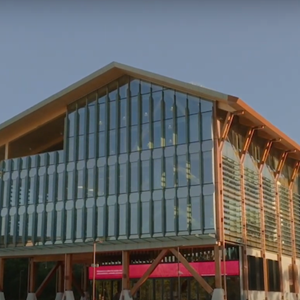Chiropractic is a primary contact health profession concerned with the diagnosis, treatment and prevention of disorders of the musculoskeletal system, and the effects of these disorders on the nervous system and general health.
Before treatment is provided, we’ll complete a thorough assessment to determine the best treatment option for your symptoms.
We use a range of chiropractic methods to develop your management plan including:
- spinal and limb manipulation
- spinal and limb mobilisation
- soft tissue therapy (e.g. massage, including cross friction and stretching)
- electrical stimulation, such as interferential and transcutaneous electrical nerve stimulators (TENS), ultrasound, and heat or cold therapy
- traction and a limited traction device known as flexion distraction
- active care (supervised rehabilitation exercise programs, home exercises)
- physical rehabilitation and advice
- referral to appropriate healthcare professionals for further investigations or co- management as deemed appropriate.
What to expect
When you visit our clinic, your case will be managed by a final (fifth) year chiropractic student clinician under the careful supervision of a registered chiropractor.
The number of consultations you need will depend on the treatment and management plan that is recommended for you. Patients with ongoing problems may require more visits. This can be discussed with your student clinician. If you have any issues with payment please advise the student clinician.
Appointment times will vary depending on the type of consultation:
Initial consultation
75–90 minutes
Treatment consultation
30–60 minutes
Case review consultation
90 minutes
Your first consultation
During your initial consultation your clinicians will conduct a thorough assessment of your condition and symptoms, including gathering information about your day-to-day activities, health history and any previous injuries. A typical examination includes vital signs (e.g. temperature and blood pressure), orthopaedic evaluation of relevant areas, and regional examinations (e.g. eyes, ears, nose and throat) as required.
Your first consultation will be focused on collecting all the relevant information to form an individualised treatment plan. To ensure you get the best possible management of your condition, treatment is not routinely provided on your first visit. This allows the student clinician to research and prepare your case with a supervisor.
Subsequent consultations
After your initial consultation, your student clinician will recommend when to book your follow up appointment and will develop a comprehensive management plan that is tailored to your situation.
At your second consult, you will be taken through your recommended treatment and management plan, and receive personalised care. Each subsequent consultation will involve a discussion on how you are progressing, an examination, and treatment in line with your management plan.
You’ll also receive guidance to assist with your day-to-day life, which may include home-care activities, stretches, exercises, ergonomics or necessary activity modification.
During the course of your care, reviews will be performed by your student clinician and their supervisor to monitor your progress and ensure that you are receiving the best possible care.
Frequently asked questions
About chiropractic treatment
Chiropractic manipulation (also known as ‘adjustment’) is a treatment method provided by chiropractors to help restore joint function and mobility. The manipulation involves the application of quick movement of the joint in a safe position to encourage normal range of motion.
Your chiropractor may recommend this as a component of your treatment and management, but only when safe and appropriate, and will explain the treatment to you in detail before proceeding. Chiropractic manipulation is only one of multiple therapeutic interventions available in the treatment plan. While chiropractors often provide manipulations, other treatment methods are often appropriate and may be preferred by the patient, for example, advice, exercises, soft tissue therapy, electric modalities, taping and sometimes referral to other practitioners.
Chiropractors take care of people with a range of conditions, mainly involving the musculoskeletal systems and joints. If you’ve previously visited the clinic for a different condition, and would like to book another appointment to discuss a new condition, please make our reception staff aware so they can book a long enough appointment time for a new assessment. A new problem requires a case review appointment so that it can be thoroughly evaluated and your management plan can be updated accordingly.
There is currently no good evidence to suggest that spinal manipulation has any effect on the immune system or systemic (organ) disease. As is the case for all healthcare providers, non-musculoskeletal conditions may be identified as a part of a clinical encounter with patients at Murdoch University Chiropractic Clinic. If a non-musculoskeletal health concern is identified during your consultation you will be referred to your medical practitioner for further evaluation and appropriate management.
There is no good evidence of this at this time.
Currently the research available is conflicted which does not allow us to offer a definitive opinion.
About our clinic
At the end of each year, the current cohort of students graduate and will transfer your care to the incoming cohort of students so that you are able to continue your care. Because your records are retained at the clinic and the supervisors overseeing your case are consistent, you are able to receive the same treatment that was provided by the previous student clinician.
If you are returning to the clinic for an existing condition you many not require a new assessment, depending on how long it’s been since your last appointment and whether you book the same clinician.
If you are returning to the clinic for a new condition, you’ll need a case review appointment to ensure a thorough assessment.
Only about one in every five or six patients will be advised to have an x-ray. Some patients will be referred out for other imaging such as MRI or a soft tissue (muscle) ultrasound when necessary.
Although musculoskeletal conditions do occur in infants and children, the chiropractic program at Murdoch University does not teach or advocate for the use of manipulation (high velocity low amplitude thrust manual therapies) in the care of infants. However, students get taught about the assessment of common musculoskeletal conditions of childhood and the use of evidence based interventions for these conditions when they do present in clinical practice.
We welcome your feedback
We value your opinion, and encourage your feedback. Patient feedback forms are available at Clinic Reception. Alternately, you are welcome to contact:
Vincenzo Cascioli
Murdoch University Chiropractic Clinic Director
chiroclinic@murdoch.edu.au

